Latests posts
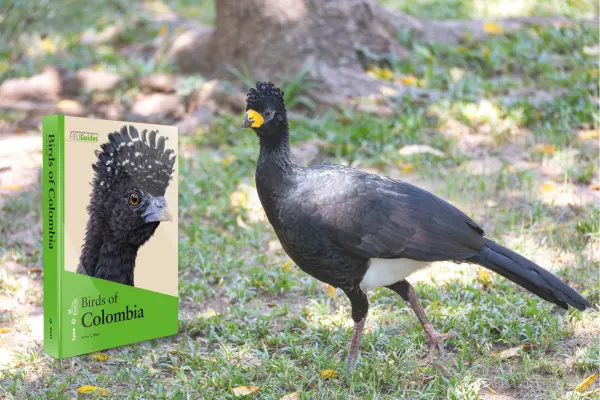
Birds of Colombia: A Journey Through the World’s Most Bird-Rich Nation
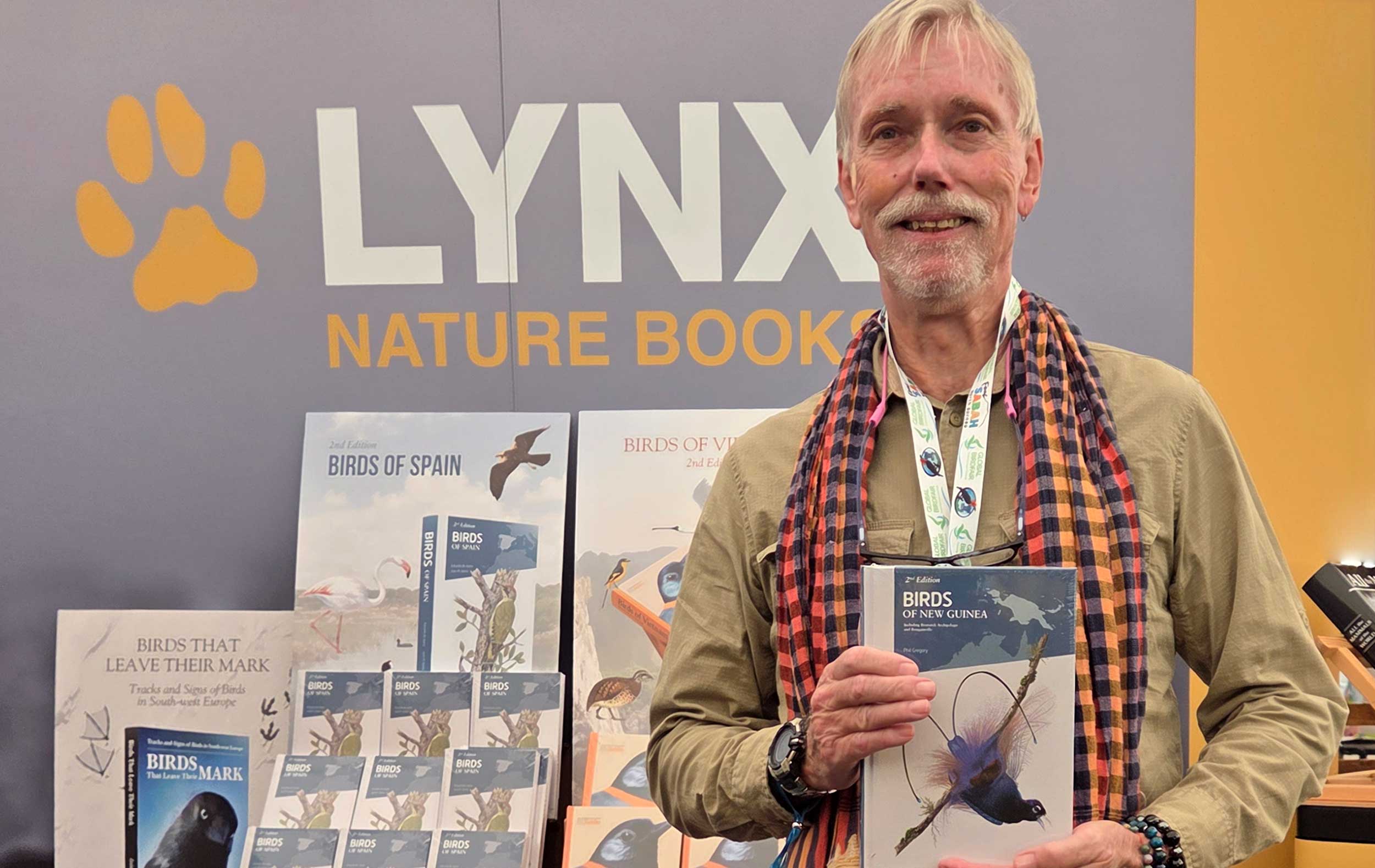
Birds of paradise and beyond: the new edition of Birds of New Guinea

Birdwatching in Spain: a guide to species, habitats and the joy of birding
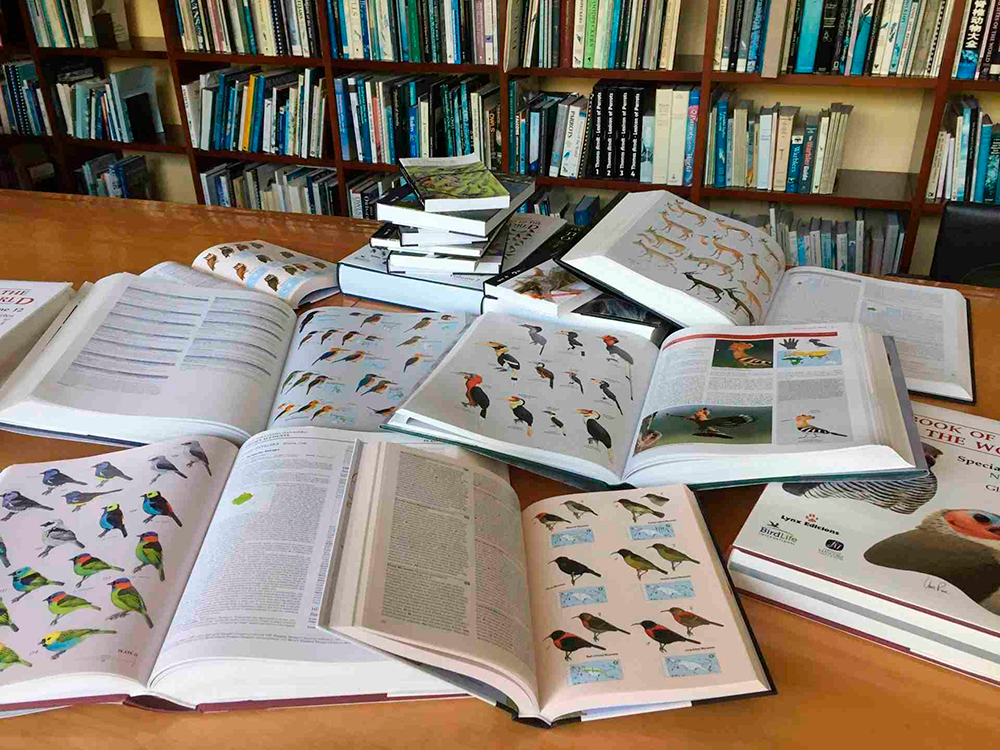
Why books matter for nature: the role of scientific publishing in conservation
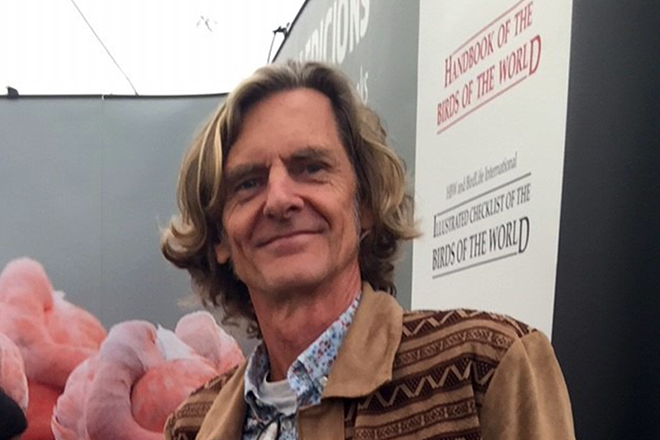
Vietnam’s birds revisited: an interview with Richard Craik on the new edition of Birds of Vietnam
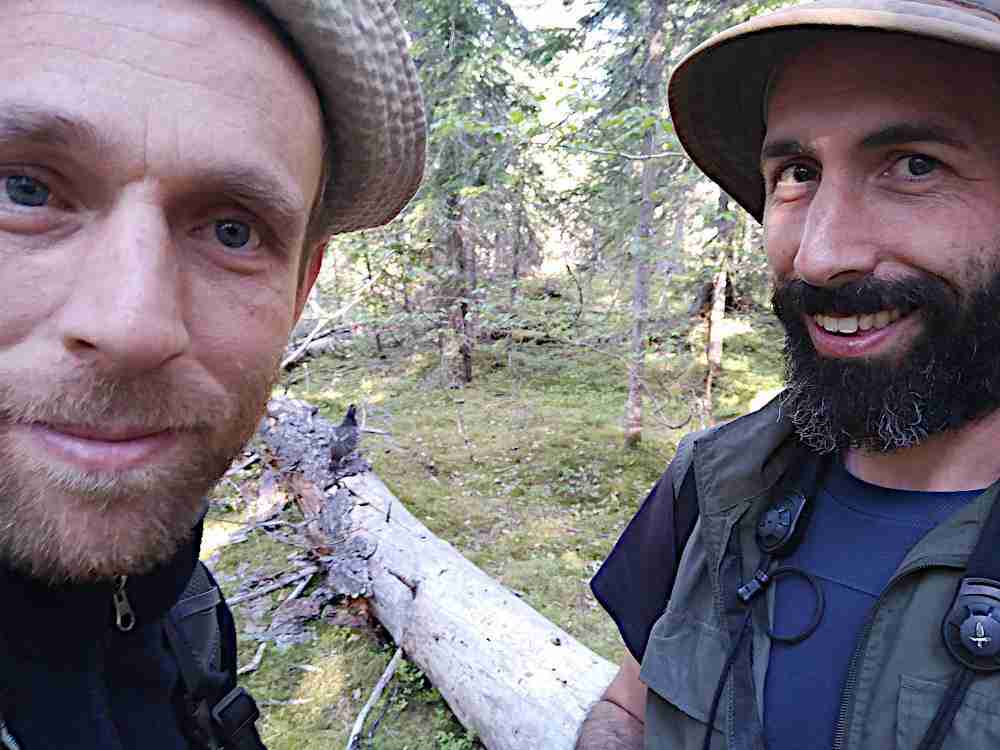
Once bitten, twice shy: between the covers of the second edition of the Birds of the Indonesian Archipelago
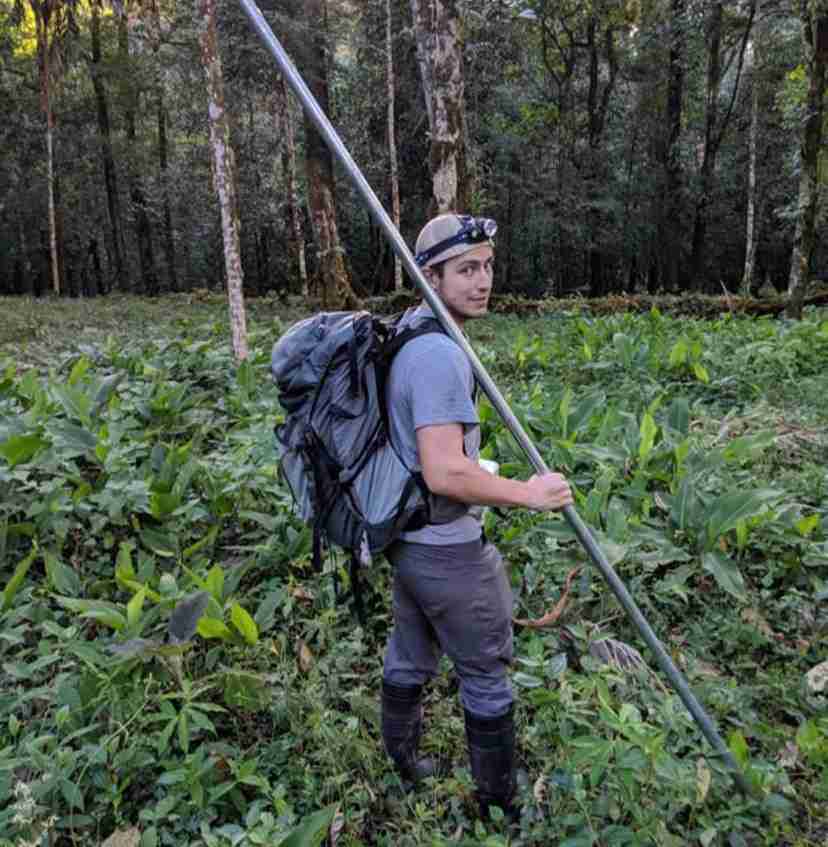
Taming the wild world of mammalian taxonomy with Connor Burgin

Discover the birds of Malaysia with Chong Leong Puan
Seabirder, author and artist Peter Harrison discusses “SEABIRDS: The New Identification Guide”
Peter Harrison kindly took the time to explain to us some of the interesting details of the 15 years that went into his new book SEABIRDS: The New Identification Guide. You won’t want to miss this interview or his new masterpiece!
Could you please describe SEABIRDS: The New Identification Guide for us in a little more detail?
Peter: Well, first and foremost, I’m a big believer in books being user friendly. This book has been designed by a seabirder, for seabirders. Unlike many other modern field guides, where many species are crammed onto a single plate (in other words, you might have 6, 7 or 8 species on a plate), in the new book the plates are arranged so that most plates have only two species. You have a facing plate on the right-hand side with as many as 20 figures. And then opposite that plate, there’s the corresponding text and a coloured map. So, at a glance, you have full-colour illustrations, a distribution map, and comprehensive text to see where the bird occurs, what its breeding biology is—in other words, when it lays its eggs—how to identify the bird, and what its confusion species are. It’s really well designed and laid out; it’s a beautiful book and very user friendly.
How many seabird species can we expect to see in your new book and how has this changed since the publication of your first book?
Peter: My first book, written some 40 years ago, included 312 seabird species and it took 1,600 illustrations to depict them across 88 plates. The new book, SEABIRDS: The New Identification Guide, has a staggering 434 species and over 3,800 full-colour figures spread across 239 plates. The reason for this is that since the publication of my first book back in 1983, our understanding of seabirds and in particular their taxonomy has changed remarkably. And so too has our understanding of plumages and moult sequences. So, it’s a much larger book and much more expansive.
Your new book seems like it’s been quite an ambitious undertaking. How long did it take for you to research, write and illustrate SEABIRDS: The New Identification Guide?
Peter: Well frankly, it has taken a lifetime. My life has been an epic adventure of research and travel across the oceans and the seas of the world to study seabirds, birds that live where all others can’t—the open ocean. My first book took 11 years to research, write, paint and then finally publish. But this book has actually taken longer. It’s so much more extensive.
When I worked up courage that yes, I was going to take on this new book, I didn’t quite realize how long it would take, but I was thinking about maybe 10 or 11 years. I started at age 60 in 2006. I am now just shy of 75 years of age, so it will have taken around 15 years to actually have completed the book, which includes all the research, all the design, the layouts, the text, and of course, the artwork; it’s the artwork that takes the most time.
You’ve mentioned the art plates are the heart and soul of the book. Could you tell us a little more about your process for creating a plate?
Peter: To create an art plate takes time, care and lots of patience. Whenever I am painting a bird, my number one priority is to bring that bird, the figure that’s on the page, to life. If I’m painting a towering Gadfly Petrel, I want the seabirder to feel the tightness of its bent and angled wings as it careens over the ocean in its wild impetuous flight. Conversely, if I am painting a White-faced Storm-petrel with its trailing legs and frequent splashdowns, it should have the feel of a dancing butterfly in a flower-filled August garden.
This may come as a surprise to many people, but the hardest part of creating a plate is not painting the figures. It’s about the layout and the detail. First of all, starting with lots and lots of tracings, and then whittling those down to the figures that you want. And then the real test, the one that often fails the first time, is getting them to all fit together on the plate. The most critical stage in any plate is the painting of that first figure. It has to be correct. It has to be lively. It has to capture the essence of the bird itself. All artists are different. For me, I always start with the eye. That has to be alive, it has to be alert. Then comes the bill, then comes the head, then wings and tail follow. Each figure takes about two hours to paint. Now it’s simply a question of standing at the easel, painting hour after hour, day after day, until the plate is complete, on average, 8 to 10 figures per species or half plate.
Looking back over the past 15 years, are there any particular milestones that stand out to you?
Peter: There were many milestones during the development and completion of the art plates that do really stand out as lasting life memories. The first plate of the project, Atlantic and Horned Puffins (Plate 105), was finished in May of 2006. The last illustrations, a half plate, Band-rumped Storm-petrel (Plate 151), was completed 15 years later in May of 2020. The text was completed and finally handed in on Monday, 17 May 2021. Perhaps the most poignant milestone occurred on Thursday, 27 May 2021, when the Lynx team in Barcelona, headed by Amy Chernasky, sent us video of SEABIRDS leaving the printing press at 2- or 3-second intervals. It was all so surreal—a huge warehouse facility full of fantastic machines, each with a separate task, some printing, others cutting, folding, sewing, gluing and assembling, and with gowned and masked professional figures reviewing colour proofs. It all had the look of a Hollywood Willy Wonka book factory set. I had tears in my eyes; at last, we had completed perhaps one of the most important projects of our lives.
The past 12 months must have been quite challenging for you with the world plighted by a global pandemic. How did this impact the completion of your book?
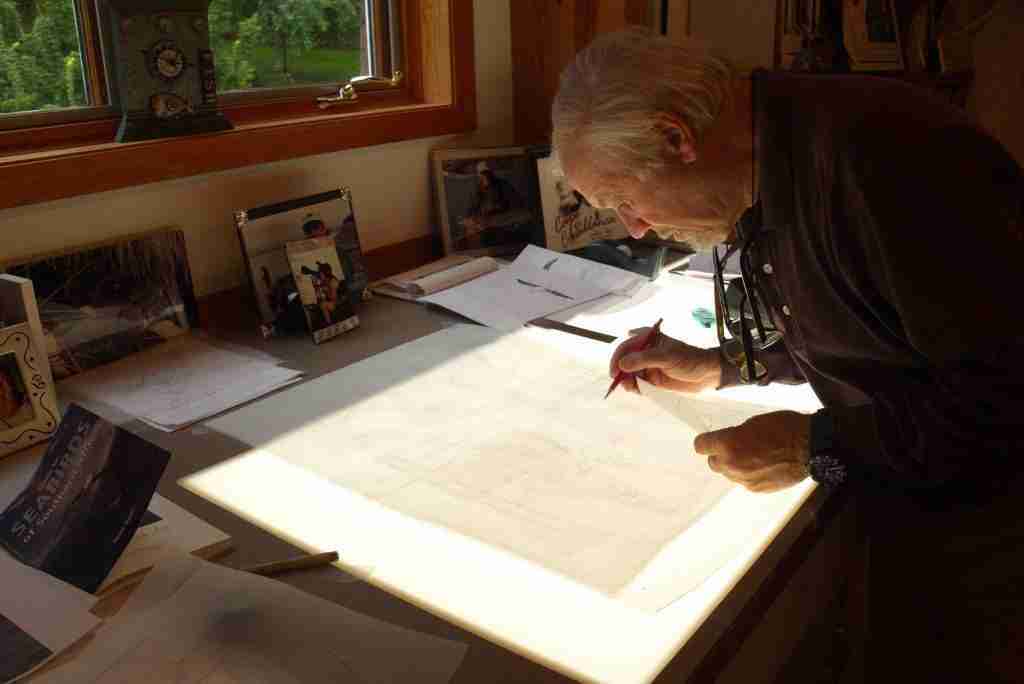
Peter: The challenges I faced in the publication of this book were many, and in truth, the project has not been an easy one. It was longer and more complex than I ever imagined, and this was certainly not helped by the seemingly non-stop vortex of changing taxonomy over the 15 years of production. I could also never have anticipated the event that would bring the world to its knees: the horrors of the COVID-19 global pandemic. There have been times when the scope and magnitude of the task were simply overwhelming.
That said, the global pandemic closed down all international travel to most of the world, which brought expedition travel to a virtual standstill for 18 months, and this meant more time at home working on plates and text. The new book, therefore, and somewhat ironically, was boosted by our enforced lockdown. The final publication date was probably possible because of, and not in spite of, the pandemic.
Please tell us about the Seabirds Team that contributed to this book.
Peter: Unlike my original guide, which was hailed as “a monumental one-man piece of work”, it was obvious from the outset that I would need assistance with a project that promised to be so much larger and broader in number of both pages and plates. I especially needed help with the Laridae—the gulls, terns and skimmers. I needed to engage a recognised gull expert and artist who understood the complex and often bewildering taxonomy and who could make sense of species’ boundaries. The choice was an easy one—the young and talented Swedish artist, Hans Larsson. Hans had recently completed 43 full-colour plates for the acclaimed Gulls of Europe, Asia and North America with renowned gull expert Klaus Malling Olsen. Over a ten-year period, Hans completed all artwork for the Gulls, Terns, Skimmers, Skuas and Seaducks in SEABIRDS—93 full-colour plates in total. He is one of the planet’s most gifted bird artists, superbly talented, and yet, humble and modest. Hans’s contribution to this project has been truly significant.
A few years from conclusion of the project, I was leading an Apex Expeditions voyage to New Zealand’s subantarctic islands. We were in the lee of Campbell Island with a near gale blowing. A fellow voyager approached me, one Martin Perrow. He had impressed me on the voyage as a person who had done his homework. He knew his birds and confidently called out name after name with details of their biology. I immediately liked him and found myself seeking his company on deck. He was fun, he was witty, and he was obviously a smart and gifted observer. Over the course of the voyage, I learned that Martin was a professional ornithologist, specialising in wind farm studies, had written several books, and was an excellent editor of all things ornithological. Late in the voyage he approached me as he had heard I was working on a new seabird guide. Did I have any text with me? Could he look it over and make comments? Three hours later he came back, looked me straight in the eyes, handed me back the manuscript sample, and simply announced, “You need me!”. Martin Perrow had arrived. In the relatively short time that Martin has been involved, he has added structure and uniformity to texts written at different times over a decade or more, tightened up taxonomy and relationships, and revamped it all to include the latest research findings. The project has been greatly enhanced by his involvement and his expertise.

Some might consider this book an expression of your life’s work. Would you agree?
Peter: Yes, wholeheartedly. My whole adult life has been dedicated to the study of seabirds, and yet we still know so little about their lives. This is the driving force behind the book. It’s also a chance to leave what I call a legacy project. In my family, the book is known as “Project Legacy”. And it’s my way of leaving as much of the research that I’ve been able to do as possible for others that follow. And there’s no doubt that seabirds are a hot topic in birding today, one of the great frontiers in Ornithology, the study of oceanic birds.
What do you hope to see for the future of seabirding?
Peter: Since the publication of the first Seabirds in 1983, there has been a dramatic increase in the number of amateur seabirders actively engaged in recording seabirds. Seabirds and seabirding are one of the new and exciting frontiers of birding. The modern seabirding movement has started. People from all walks of life are now eager to experience pelagic birding, to stand on the decks of a ship and watch in awe at the peerless grace of an albatross crossing in the wake, hour after hour, without a single beat of its wings. Better still to sit with an albatross at its nest site in South Georgia or to share a beach with 60,000 King Penguins! From humble and niche beginnings, adventure travel has become an international tourism industry—a global phenomenon of seabirding! No part of the globe is seemingly unreachable, including the frozen, haunting wastes of Antarctica.
In recent years, it has also been particularly encouraging to see the emergence of a new generation of seabirders such as (in alphabetical order): Bob Flood, Chris Gaskin, Steve Howell, the late Luis Monteiro, Matt Rayner, Magnus Robb & Sound Approach, Peter Ryan, Paul Scofield, Hadoram Shirihai and Brent Stephenson, to name but a few, as they have made ground-breaking discoveries and produced papers on such topics as the rediscovery of New Zealand Storm-petrel, Beck’s Petrel, and Mascarene Petrel, to the use of sound recordings to define likely species.
I would hope that the modern seabird movement continues to grow and expand and, in so doing, becomes a much-needed voice to champion seabird conservation topics to protect and conserve individual species in peril and safeguard their breeding havens. Of particular importance is the eradication of introduced, alien mammalian predators at breeding locations. Let us all remember extinction is forever, and without conservation, there can be no future.








 Copyright 2025 © Lynx Nature Books
Copyright 2025 © Lynx Nature Books